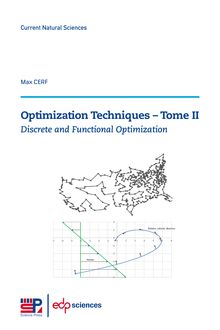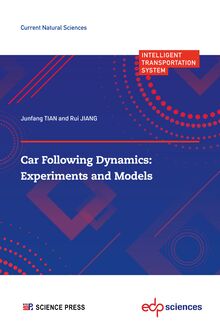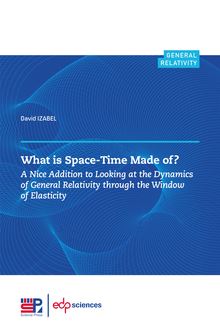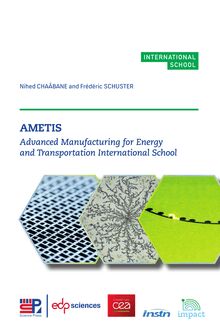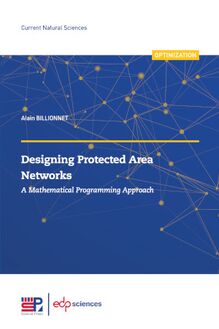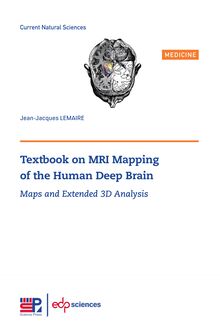Practical PID Handbook , livre ebook
Description
A true practical guide, this book brings together all elements necessary for the practice of PID control in industries. The first part presents the different characteristics of the PID controller: continuous, digital, architectures, realization algorithms implementation. The second part describes different adjustment methods that are practiced in the industry, all illustrated with numerous response curves to show their specificities. We will also find elements concerning simple methods, often graphic, to identify the usual processes to be controlled, without identification software. The book is intended to be practical with many summary tables, for immediate use of knowledge with as few calculations as possible. This book is aimed at students wishing to learn the practice of PID control, as well as teachers, engineers and technicians of the profession.
Preamble . . . . . . . . . . . . . . . . . . . . . . . . . . . . . . . . . . . . . . . . . . . . . . . . . . . . . . III
CHAPTER 1
Main Features . . . . . . . . . . . . . . . . . . . . . . . . . . . . . . . . . . . . . . . . . . . . . . . 1
1.1 Context . . . . . . . . . . . . . . . . . . . . . . . . . . . . . . . . . . . . . . . . . . . . . . . 1
1.2 Features . . . . . . . . . . . . . . . . . . . . . . . . . . . . . . . . . . . . . . . . . . . . . . . 2
1.3 PID Actions . . . . . . . . . . . . . . . . . . . . . . . . . . . . . . . . . . . . . . . . . . . . 5
1.3.1 Proportional Action . . . . . . . . . . . . . . . . . . . . . . . . . . . . . . . . . 5
1.3.2 Integral Action . . . . . . . . . . . . . . . . . . . . . . . . . . . . . . . . . . . . . 5
1.3.3 Derivative Action . . . . . . . . . . . . . . . . . . . . . . . . . . . . . . . . . . . 7
1.4 Different Types of PID . . . . . . . . . . . . . . . . . . . . . . . . . . . . . . . . . . . . 9
1.5 Equivalence of PID . . . . . . . . . . . . . . . . . . . . . . . . . . . . . . . . . . . . . . . 17
1.5.1 Mixed ↔ Parallel Conversion . . . . . . . . . . . . . . . . . . . . . . . . . . 19
1.5.2 Mixed ↔ Series Conversions. . . . . . . . . . . . . . . . . . . . . . . . . . . 19
1.5.3 Parallel ↔ Series Conversions . . . . . . . . . . . . . . . . . . . . . . . . . 23
1.5.4 Summary Tables . . . . . . . . . . . . . . . . . . . . . . . . . . . . . . . . . . . 25
1.5.5 Examples . . . . . . . . . . . . . . . . . . . . . . . . . . . . . . . . . . . . . . . . . 29
1.6 PID: Frequency Response . . . . . . . . . . . . . . . . . . . . . . . . . . . . . . . . . . 30
1.6.1 Series PID . . . . . . . . . . . . . . . . . . . . . . . . . . . . . . . . . . . . . . . . 30
1.6.2 Mixed PID . . . . . . . . . . . . . . . . . . . . . . . . . . . . . . . . . . . . . . . . 32
CHAPTER 2
Digital PID . . . . . . . . . . . . . . . . . . . . . . . . . . . . . . . . . . . . . . . . . . . . . . . . . 37
2.1 Continuous to Digital Transposition . . . . . . . . . . . . . . . . . . . . . . . . . . 37
2.1.1 z-Transformation . . . . . . . . . . . . . . . . . . . . . . . . . . . . . . . . . . . 38
2.1.2 Backward or BW Approximation . . . . . . . . . . . . . . . . . . . . . . . 38
2.1.3 Forward or FW Approximation . . . . . . . . . . . . . . . . . . . . . . . . 38
2.1.4 z-Transformation and Approximation . . . . . . . . . . . . . . . . . . . . 39
2.2 Basic Actions . . . . . . . . . . . . . . . . . . . . . . . . . . . . . . . . . . . . . . . . . . . 39
2.2.1 Integral . . . . . . . . . . . . . . . . . . . . . . . . . . . . . . . . . . . . . . . . . . 39
2.2.2 Derivative . . . . . . . . . . . . . . . . . . . . . . . . . . . . . . . . . . . . . . . . 40
2.2.3 Transposition Tables . . . . . . . . . . . . . . . . . . . . . . . . . . . . . . . . 41
2.3 Digital PID . . . . . . . . . . . . . . . . . . . . . . . . . . . . . . . . . . . . . . . . . . . . . 42
2.3.1 PID Form . . . . . . . . . . . . . . . . . . . . . . . . . . . . . . . . . . . . . . . . 42
2.3.2 RST Form . . . . . . . . . . . . . . . . . . . . . . . . . . . . . . . . . . . . . . . . 43
2.3.3 Correspondence Tables . . . . . . . . . . . . . . . . . . . . . . . . . . . . . . . 44
CHAPTER 3
Realization Algorithms . . . . . . . . . . . . . . . . . . . . . . . . . . . . . . . . . . . . . . . . . 55
3.1 Sample Processing . . . . . . . . . . . . . . . . . . . . . . . . . . . . . . . . . . . . . . . 56
3.2 Different Algorithms . . . . . . . . . . . . . . . . . . . . . . . . . . . . . . . . . . . . . . 58
3.2.1 PID Forms . . . . . . . . . . . . . . . . . . . . . . . . . . . . . . . . . . . . . . . . 58
3.2.2 RST Form . . . . . . . . . . . . . . . . . . . . . . . . . . . . . . . . . . . . . . . . 63
3.3 Ancillary Features . . . . . . . . . . . . . . . . . . . . . . . . . . . . . . . . . . . . . . . . 68
3.3.1 Manual Mode . . . . . . . . . . . . . . . . . . . . . . . . . . . . . . . . . . . . . . 68
3.3.2 Automatic Mode . . . . . . . . . . . . . . . . . . . . . . . . . . . . . . . . . . . 68
3.3.3 Limitations. . . . . . . . . . . . . . . . . . . . . . . . . . . . . . . . . . . . . . . . 69
3.3.4 Direct/Reverse Choice . . . . . . . . . . . . . . . . . . . . . . . . . . . . . . . 75
3.3.5 Inputs/Outputs . . . . . . . . . . . . . . . . . . . . . . . . . . . . . . . . . . . . 76
3.4 Summary . . . . . . . . . . . . . . . . . . . . . . . . . . . . . . . . . . . . . . . . . . . . . . 77
CHAPTER 4
Process Models . . . . . . . . . . . . . . . . . . . . . . . . . . . . . . . . . . . . . . . . . . . . . . . 81
4.1 Different Process Models . . . . . . . . . . . . . . . . . . . . . . . . . . . . . . . . . . . 81
4.1.1 Stable Systems . . . . . . . . . . . . . . . . . . . . . . . . . . . . . . . . . . . . . 81
4.1.2 Integrating Systems . . . . . . . . . . . . . . . . . . . . . . . . . . . . . . . . . 84
4.1.3 Usual Models . . . . . . . . . . . . . . . . . . . . . . . . . . . . . . . . . . . . . . 85
4.1.4 Identification Methods . . . . . . . . . . . . . . . . . . . . . . . . . . . . . . . 86
4.2 Broïda Model . . . . . . . . . . . . . . . . . . . . . . . . . . . . . . . . . . . . . . . . . . . 88
4.2.1 Open Loop Identification . . . . . . . . . . . . . . . . . . . . . . . . . . . . . 88
4.2.2 Closed Loop Identification (Dindeleux, 1989) . . . . . . . . . . . . . . 89
4.3 2nd Order Model with Delay. . . . . . . . . . . . . . . . . . . . . . . . . . . . . . . . 90
4.3.1 Open Loop Identification . . . . . . . . . . . . . . . . . . . . . . . . . . . . . 90
4.3.2 Closed Loop Identification . . . . . . . . . . . . . . . . . . . . . . . . . . . . 91
4.4 Strejc Model (Strejc, 1960) . . . . . . . . . . . . . . . . . . . . . . . . . . . . . . . . . 93
4.4.1 Open Loop Identification . . . . . . . . . . . . . . . . . . . . . . . . . . . . . 93
4.4.2 Closed Loop Identification . . . . . . . . . . . . . . . . . . . . . . . . . . . . 97
4.5 Reverse Response Strejc Model . . . . . . . . . . . . . . . . . . . . . . . . . . . . . . 100
4.6 Integrating Model with Delay . . . . . . . . . . . . . . . . . . . . . . . . . . . . . . . 103
4.6.1 Open Loop Identification . . . . . . . . . . . . . . . . . . . . . . . . . . . . . 103
4.6.2 Closed Loop Identification . . . . . . . . . . . . . . . . . . . . . . . . . . . . 104
4.7 Integrator and 1st Order Model . . . . . . . . . . . . . . . . . . . . . . . . . . . . . 104
4.7.1 Open Loop Identification . . . . . . . . . . . . . . . . . . . . . . . . . . . . . 104
4.7.2 Closed Loop Identification . . . . . . . . . . . . . . . . . . . . . . . . . . . . 107
4.8 Integrating Model and Order n . . . . . . . . . . . . . . . . . . . . . . . . . . . . . . 110
4.8.1 Open Loop Identification . . . . . . . . . . . . . . . . . . . . . . . . . . . . . 110
4.8.2 Closed Loop Identification . . . . . . . . . . . . . . . . . . . . . . . . . . . . 113
4.9 Integrating Reverse Response Model . . . . . . . . . . . . . . . . . . . . . . . . . . 115
4.9.1 Open Loop Identification . . . . . . . . . . . . . . . . . . . . . . . . . . . . . 115
VIII Contents
4.9.2 Closed Loop Identification . . . . . . . . . . . . . . . . . . . . . . . . . . . . 121
4.9.3 Case of Delay . . . . . . . . . . . . . . . . . . . . . . . . . . . . . . . . . . . . . . 121
CHAPTER 5
Evaluation of Performances . . . . . . . . . . . . . . . . . . . . . . . . . . . . . . . . . . . . . 123
5.1 Process Performances . . . . . . . . . . . . . . . . . . . . . . . . . . . . . . . . . . . . . 123
5.1.1 Step Response . . . . . . . . . . . . . . . . . . . . . . . . . . . . . . . . . . . . . 123
5.1.2 Frequency Response . . . . . . . . . . . . . . . . . . . . . . . . . . . . . . . . . 124
5.2 Adjustment Objectives . . . . . . . . . . . . . . . . . . . . . . . . . . . . . . . . . . . . 125
5.3 Closed Loop Setting Criteria . . . . . . . . . . . . . . . . . . . . . . . . . . . . . . . . 126
5.3.1 Stability Criteria . . . . . . . . . . . . . . . . . . . . . . . . . . . . . . . . . . . 128
5.3.2 Step Response Criteria . . . . . . . . . . . . . . . . . . . . . . . . . . . . . . . 130
5.3.3 1st or 2nd Order Systems . . . . . . . . . . . . . . . . . . . . . . . . . . . . . 131
5.3.4 Order n Systems: Naslin Criterion (Naslin, 1968, 1962). . . . . . . 131
5.3.5 Optimization Criteria . . . . . . . . . . . . . . . . . . . . . . . . . . . . . . . . 134
5.3.6 Frequency Criteria . . . . . . . . . . . . . . . . . . . . . . . . . . . . . . . . . . 135
CHAPTER 6
Ziegler–Nichols and Associated Methods . . . . . . . . . . . . . . . . . . . . . . . . . . . . 137
6.1 Ziegler and Nichols Closed Loop Method. . . . . . . . . . . . . . . . . . . . . . . 137
6.2 Ziegler and Nichols Open Loop Method . . . . . . . . . . . . . . . . . . . . . . . 139
6.3 Cohen and Coon Method (Cohen and Coon, 1953) . . . . . . . . . . . . . . . 142
6.4 Takahashi Method (Takahashi et al., 1971) . . . . . . . . . . . . . . . . . . . . . 143
6.5 KT Method of Aström and Hägglund (1995) . . . . . . . . . . . . . . . . . . . . 144
6.5.1 Ultimate Gain Method . . . . . . . . . . . . . . . . . . . . . . . . . . . . . . . 144
6.5.2 Open Loop Method . . . . . . . . . . . . . . . . . . . . . . . . . . . . . . . . . 145
6.5.3 Adjustment Curves. . . . . . . . . . . . . . . . . . . . . . . . . . . . . . . . . . 147
6.6 Performances . . . . . . . . . . . . . . . . . . . . . . . . . . . . . . . . . . . . . . . . . . . 148
6.6.1 Stable Process . . . . . . . . . . . . . . . . . . . . . . . . . . . . . . . . . . . . . 148
6.6.2 Integrating Process . . . . . . . . . . . . . . . . . . . . . . . . . . . . . . . . . . 153
6.6.3 Process with Delay . . . . . . . . . . . . . . . . . . . . . . . . . . . . . . . . . . 155
6.7 Overview Summary . . . . . . . . . . . . . . . . . . . . . . . . . . . . . . . . . . . . . . . 157
CHAPTER 7
Cancellation Methods . . . . . . . . . . . . . . . . . . . . . . . . . . . . . . . . . . . . . . . . . . 159
7.1 Dindeleux Method (Dindeleux, 1989) . . . . . . . . . . . . . . . . . . . . . . . . . 159
7.1.1 Stable Process . . . . . . . . . . . . . . . . . . . . . . . . . . . . . . . . . . . . . 159
7.1.2 Integrating Process . . . . . . . . . . . . . . . . . . . . . . . . . . . . . . . . . . 160
7.1.3 Ultimate Gain Method . . . . . . . . . . . . . . . . . . . . . . . . . . . . . . . 161
7.1.4 Performances . . . . . . . . . . . . . . . . . . . . . . . . . . . . . . . . . . . . . . 161
7.2 Haalman Method (Haalman, 1965) . . . . . . . . . . . . . . . . . . . . . . . . . . . 170
7.3 Cancellation for 2nd Order . . . . . . . . . . . . . . . . . . . . . . . . . . . . . . . . . 173
7.3.1 Stable Process . . . . . . . . . . . . . . . . . . . . . . . . . . . . . . . . . . . . . 173
7.3.2 Integrating Process . . . . . . . . . . . . . . . . . . . . . . . . . . . . . . . . . . 180
Contents IX
7.4 Direct Synthesis Method and IMC Method . . . . . . . . . . . . . . . . . . . . . 188
7.4.1 Direct Synthesis Method . . . . . . . . . . . . . . . . . . . . . . . . . . . . . 188
7.4.2 IMC Method (Internal Model Control) . . . . . . . . . . . . . . . . . . . 189
7.4.3 PID Controller . . . . . . . . . . . . . . . . . . . . . . . . . . . . . . . . . . . . . 190
7.5 Synthesis Summary . . . . . . . . . . . . . . . . . . . . . . . . . . . . . . . . . . . . . . . 195
CHAPTER 8
Optimization Methods . . . . . . . . . . . . . . . . . . . . . . . . . . . . . . . . . . . . . . . . . 197
8.1 Integral Criterion Method . . . . . . . . . . . . . . . . . . . . . . . . . . . . . . . . . . 198
8.1.1 Study of Rovira, Murrill and Smith (Rovira et al., 1967) . . . . . 199
8.1.2 Study of Miller, Lopez and Smith (Miller et al., 1967). . . . . . . . 199
8.1.3 Study of Kaya and Scheib (Kaya and Scheib, 1988) . . . . . . . . . 200
8.1.4 Example . . . . . . . . . . . . . . . . . . . . . . . . . . . . . . . . . . . . . . . . . . 202
8.2 Chien, Hrones and Reswick Method (Chien et al., 1952) . . . . . . . . . . . 203
8.3 Samal Method . . . . . . . . . . . . . . . . . . . . . . . . . . . . . . . . . . . . . . . . . . 207
8.4 Choice of a Method. . . . . . . . . . . . . . . . . . . . . . . . . . . . . . . . . . . . . . . 218
CHAPTER 9
Pole Placement Methods. . . . . . . . . . . . . . . . . . . . . . . . . . . . . . . . . . . . . . . . 219
9.1 Naslin Method (Naslin, 1968, 1962) . . . . . . . . . . . . . . . . . . . . . . . . . . 219
9.1.1 Original Method . . . . . . . . . . . . . . . . . . . . . . . . . . . . . . . . . . . . 219
9.1.2 Industrial Method (Chaussard et al., 1967) . . . . . . . . . . . . . . . . 222
9.1.3 Method for Integrating Process . . . . . . . . . . . . . . . . . . . . . . . . 240
9.1.4 Variant for Integrating Process . . . . . . . . . . . . . . . . . . . . . . . . . 244
9.1.5 Method for Integrating Strejc Model . . . . . . . . . . . . . . . . . . . . 249
9.2 Classical Method (Corriou, 2018; Flaus, 1994). . . . . . . . . . . . . . . . . . . 252
9.2.1 Setting Criteria . . . . . . . . . . . . . . . . . . . . . . . . . . . . . . . . . . . . 254
9.2.2 Performances . . . . . . . . . . . . . . . . . . . . . . . . . . . . . . . . . . . . . . 256
9.2.3 Case of a Derivative on the Measurement . . . . . . . . . . . . . . . . . 259
9.2.4 Use . . . . . . . . . . . . . . . . . . . . . . . . . . . . . . . . . . . . . . . . . . . . . 261
9.3 Dominant Poles Method . . . . . . . . . . . . . . . . . . . . . . . . . . . . . . . . . . . 261
9.3.1 Principle (Aström and Hägglund, 1995) . . . . . . . . . . . . . . . . . . 261
9.3.2 Application . . . . . . . . . . . . . . . . . . . . . . . . . . . . . . . . . . . . . . . 262
9.3.3 Settings . . . . . . . . . . . . . . . . . . . . . . . . . . . . . . . . . . . . . . . . . . 263
9.4 Choice of a Method. . . . . . . . . . . . . . . . . . . . . . . . . . . . . . . . . . . . . . . 265
CHAPTER 10
Frequency Methods . . . . . . . . . . . . . . . . . . . . . . . . . . . . . . . . . . . . . . . . . . . 267
10.1 1st Method: Phase Margin . . . . . . . . . . . . . . . . . . . . . . . . . . . . . . . . 268
10.2 2nd Method: Resonance Factor . . . . . . . . . . . . . . . . . . . . . . . . . . . . . 272
10.2.1 Examples of Application. . . . . . . . . . . . . . . . . . . . . . . . . . . . 274
10.2.2 Case of Integrating Systems . . . . . . . . . . . . . . . . . . . . . . . . . 276
10.3 Kessler’s Method (Kessler, 1958, 1955) . . . . . . . . . . . . . . . . . . . . . . . 280
10.3.1 2nd Order Process . . . . . . . . . . . . . . . . . . . . . . . . . . . . . . . . 281
X Contents
10.3.2 3rd Order Process . . . . . . . . . . . . . . . . . . . . . . . . . . . . . . . . 283
10.3.3 Performances . . . . . . . . . . . . . . . . . . . . . . . . . . . . . . . . . . . . 287
10.3.4 Summary . . . . . . . . . . . . . . . . . . . . . . . . . . . . . . . . . . . . . . . 287
10.4 KLV Method (Kessler, Landau and Voda) (Voda and Landau, 1995) 292
10.4.1 Basic Settings. . . . . . . . . . . . . . . . . . . . . . . . . . . . . . . . . . . . 292
10.4.2 Auto-Calibration . . . . . . . . . . . . . . . . . . . . . . . . . . . . . . . . . 294
10.4.3 KLV 1P Method. . . . . . . . . . . . . . . . . . . . . . . . . . . . . . . . . . 296
10.4.4 KLV 2P Method. . . . . . . . . . . . . . . . . . . . . . . . . . . . . . . . . . 298
10.4.5 Performances . . . . . . . . . . . . . . . . . . . . . . . . . . . . . . . . . . . . 300
10.5 Use and Choice . . . . . . . . . . . . . . . . . . . . . . . . . . . . . . . . . . . . . . . . . 302
CHAPTER 11
Digital Settings Methods . . . . . . . . . . . . . . . . . . . . . . . . . . . . . . . . . . . . . . . 303
11.1 Choice of the Sampling Period . . . . . . . . . . . . . . . . . . . . . . . . . . . . . 303
11.2 Zero Cancellation . . . . . . . . . . . . . . . . . . . . . . . . . . . . . . . . . . . . . . . 304
11.3 Cancellation Method (Buhler, 1986) . . . . . . . . . . . . . . . . . . . . . . . . . 305
11.3.1 Principle . . . . . . . . . . . . . . . . . . . . . . . . . . . . . . . . . . . . . . . 305
11.3.2 Process. . . . . . . . . . . . . . . . . . . . . . . . . . . . . . . . . . . . . . . . . 306
11.3.3 Case of Uncompensated Zeros . . . . . . . . . . . . . . . . . . . . . . . 306
11.3.4 Choice of HD . . . . . . . . . . . . . . . . . . . . . . . . . . . . . . . . . . . . 306
11.3.5 Controller. . . . . . . . . . . . . . . . . . . . . . . . . . . . . . . . . . . . . . . 307
11.3.6 Use . . . . . . . . . . . . . . . . . . . . . . . . . . . . . . . . . . . . . . . . . . . 309
11.3.7 Examples of Responses . . . . . . . . . . . . . . . . . . . . . . . . . . . . . 309
11.4 Pole Placement Method (Borne et al., 1993; Landau, 1988) . . . . . . . . 313
11.4.1 Principle . . . . . . . . . . . . . . . . . . . . . . . . . . . . . . . . . . . . . . . 313
11.4.2 Zero Cancellation of B . . . . . . . . . . . . . . . . . . . . . . . . . . . . . 314
11.4.3 Pole Placement with RST. . . . . . . . . . . . . . . . . . . . . . . . . . . 314
11.4.4 Process. . . . . . . . . . . . . . . . . . . . . . . . . . . . . . . . . . . . . . . . . 315
11.4.5 Use . . . . . . . . . . . . . . . . . . . . . . . . . . . . . . . . . . . . . . . . . . . 315
11.4.6 Summary Tables . . . . . . . . . . . . . . . . . . . . . . . . . . . . . . . . . 316
11.4.7 Examples . . . . . . . . . . . . . . . . . . . . . . . . . . . . . . . . . . . . . . . 316
11.5 Tracking and Regulation . . . . . . . . . . . . . . . . . . . . . . . . . . . . . . . . . . 323
11.5.1 Principle . . . . . . . . . . . . . . . . . . . . . . . . . . . . . . . . . . . . . . . 323
11.5.2 Process. . . . . . . . . . . . . . . . . . . . . . . . . . . . . . . . . . . . . . . . . 326
11.5.3 Use . . . . . . . . . . . . . . . . . . . . . . . . . . . . . . . . . . . . . . . . . . . 326
11.5.4 Examples . . . . . . . . . . . . . . . . . . . . . . . . . . . . . . . . . . . . . . . 327
11.5.5 Summary Tables . . . . . . . . . . . . . . . . . . . . . . . . . . . . . . . . . 331
11.6 Choice of a Dynamic d1, d2 . . . . . . . . . . . . . . . . . . . . . . . . . . . . . . . . 331
11.6.1 Choice of Tracking Dynamics . . . . . . . . . . . . . . . . . . . . . . . . 335
11.6.2 Choice of a Regulation Dynamics . . . . . . . . . . . . . . . . . . . . . 338
CHAPTER 12
Adjustments and Use . . . . . . . . . . . . . . . . . . . . . . . . . . . . . . . . . . . . . . . . . . 349
12.1 Sampling Period . . . . . . . . . . . . . . . . . . . . . . . . . . . . . . . . . . . . . . . . 349
12.1.1 PI Controller . . . . . . . . . . . . . . . . . . . . . . . . . . . . . . . . . . . . 349
Contents XI
12.1.2 PID Controller . . . . . . . . . . . . . . . . . . . . . . . . . . . . . . . . . . . 351
12.2 Filter Factor N (Visioli, 2006) . . . . . . . . . . . . . . . . . . . . . . . . . . . . . . 356
12.3 Model Compliance . . . . . . . . . . . . . . . . . . . . . . . . . . . . . . . . . . . . . . 357
12.3.1 Broïda Model . . . . . . . . . . . . . . . . . . . . . . . . . . . . . . . . . . . . 357
12.3.2 Strejc Model. . . . . . . . . . . . . . . . . . . . . . . . . . . . . . . . . . . . . 358
12.3.3 Static Gain. . . . . . . . . . . . . . . . . . . . . . . . . . . . . . . . . . . . . . 359
12.4 Control Constraints. . . . . . . . . . . . . . . . . . . . . . . . . . . . . . . . . . . . . . 360
12.5 Use . . . . . . . . . . . . . . . . . . . . . . . . . . . . . . . . . . . . . . . . . . . . . . . . . . 364
12.5.1 Choice of Controller Type . . . . . . . . . . . . . . . . . . . . . . . . . . 364
12.5.2 Choice of an Adjustment Method . . . . . . . . . . . . . . . . . . . . . 365
12.6 Conclusion . . . . . . . . . . . . . . . . . . . . . . . . . . . . . . . . . . . . . . . . . . . . 371
Appendix . . . . . . . . . . . . . . . . . . . . . . . . . . . . . . . . . . . . . . . . . . . . . . . . . . . 373
Bibliography . . . . . . . . . . . . . . . . . . . . . . . . . . . . . . . . . . . . . . . . . . . . . . . . 401
Index . . . . . . . . . . . . . . . . . . . . . . . . . . . . . . . . . . . . . . . . . . . . . . . . . . . . . . 405
Sujets
Informations
| Publié par | EDP Sciences |
| Date de parution | 17 mars 2022 |
| Nombre de lectures | 1 |
| EAN13 | 9782759826094 |
| Langue | English |
| Poids de l'ouvrage | 71 Mo |
Informations légales : prix de location à la page 1,3300€. Cette information est donnée uniquement à titre indicatif conformément à la législation en vigueur.
Extrait

